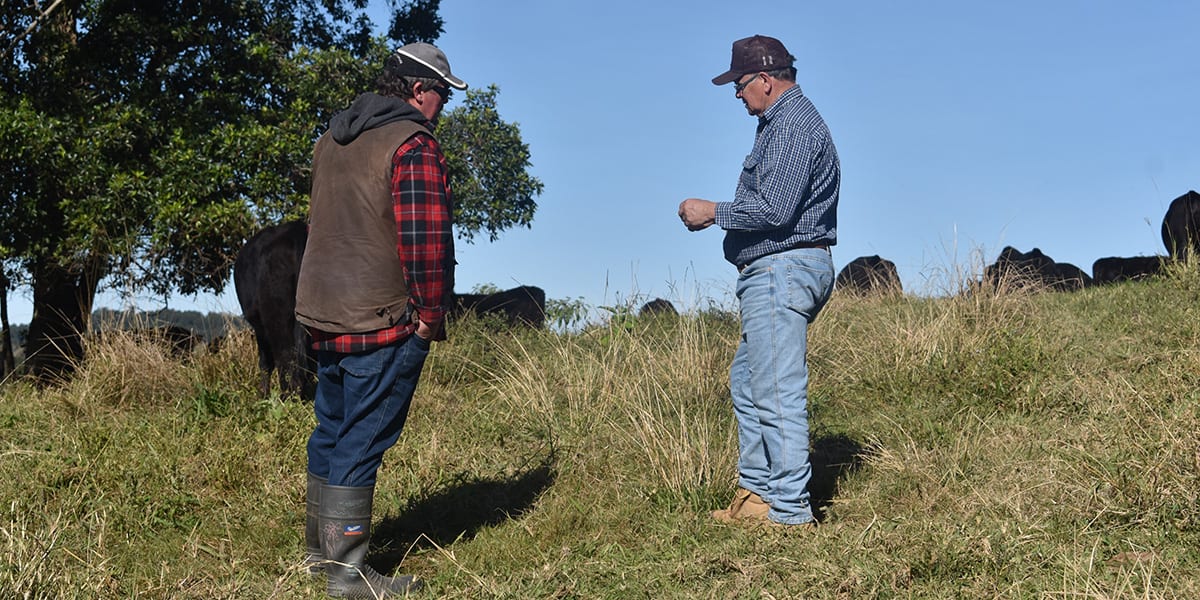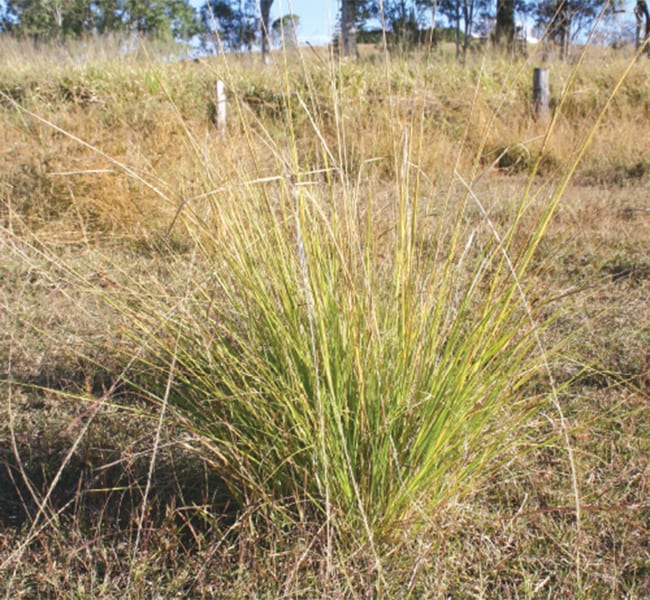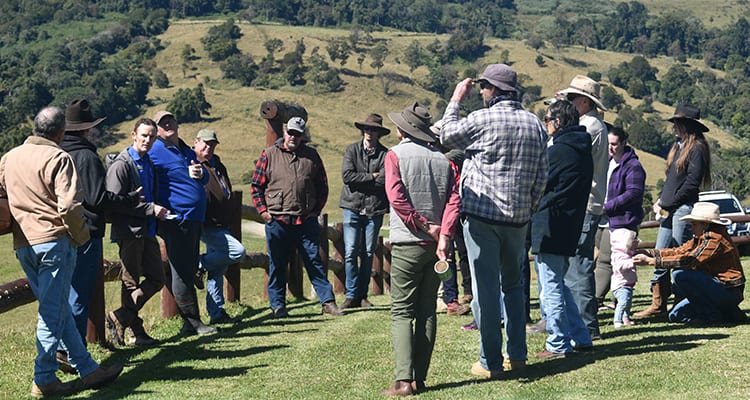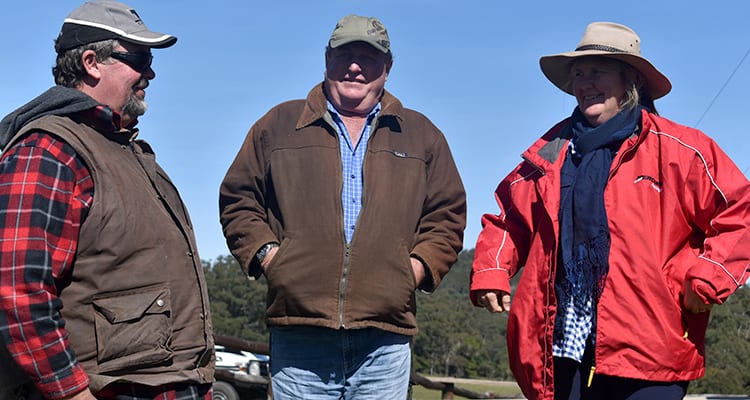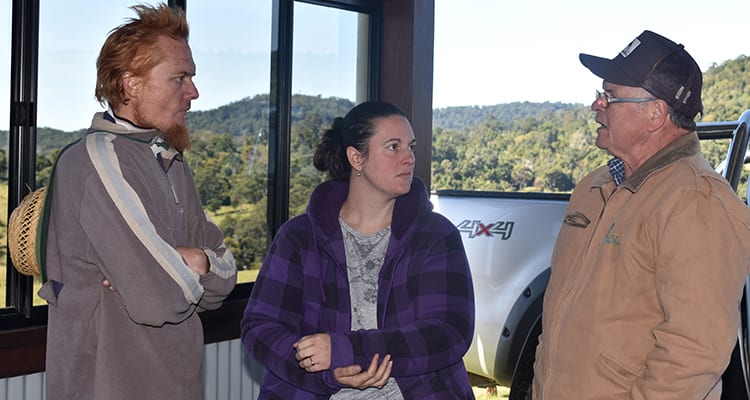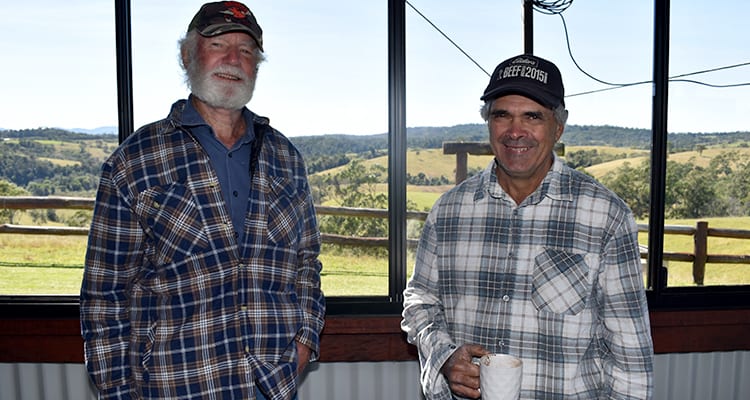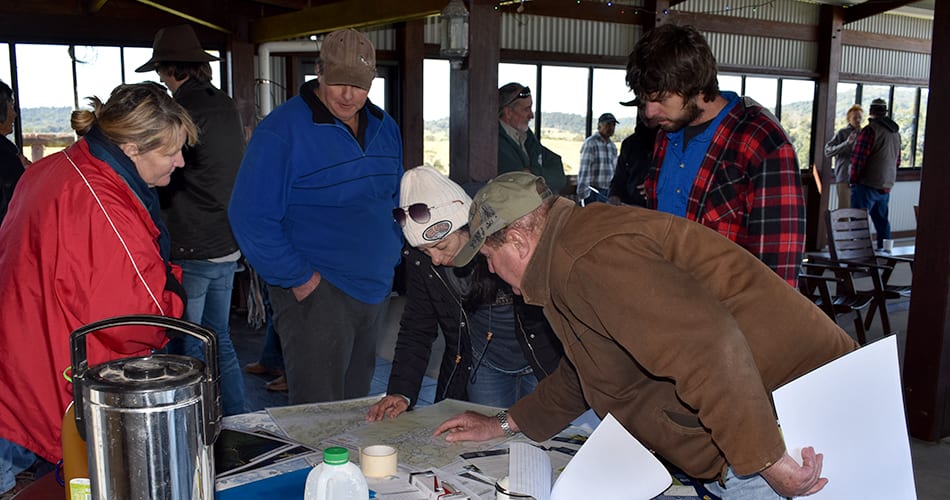War on weeds at Eungella and Crediton focuses on Giant rat’s tail grass
Cloudbreak Lowlines Farm grazier Kell Tennent (left) and DAF Senior Biosecurity Officer John Reeve inspect a paddock containing GRT.
Workshop focuses squarely on Public Enemy #1
Eungella and Crediton landholders are waging war with Giant rat’s tail (GRT) grass.
The African native is an aggressive grass that can reduce pasture productivity and significantly degrade natural areas. Introduced to Australia in the early 1960s, it is capable of producing 85,000 seeds per square metre, and if left unchecked can quickly establish dominance in the paddock.
NQ Dry Tropics’ Landholders Driving Change Land Management Support Coordinator Rodger Walker said GRT grass posed a major threat to landholders and producers in the Upper Broken River catchment.
“GRT is an invasive grass that spreads quickly, out-competes desirable pastures, and causes significant degradation that can result in reducing stocking rates,” Mr Walker said.
“Once it has taken hold, it’s extremely difficult to eradicate. Landholders rely on a combination of chemical and mechanical controls coupled with changes in land management practices to reduce its impact with no single option on its own being totally effective.”
Landholders from Crediton, Eungella and Dalrymple Heights discuss ways to manage Giant rat’s tail grass at a GRT workshop held at Crediton.
Workshop host Mick Sheehy, centre, talks about how he is trying to manage GRT on his property. Pictured is DAF’s GRT specialist John Reeve, left, and NQ Dry Tropics’ LDC Land Management Support Coordinator Rodger Walker.
More than 20 landholders attended a Landholders Driving Change GRT grass management workshop with Department of Agriculture and Fisheries weed expert John Reeve last month, hosted by Crediton grazier Mick Sheehy. The aim was to discuss catchment considerations in managing Giant rat’s tail grass.
Mr Reeve warned there was no silver bullet to halt the spread of the grass – instead there was a silver lining – they could learn to live with it where it’s no longer causing environmental and economic impacts.
“Landholders will not eradicate GRT from their property, but they are able to reduce the bulkiness of the GRT population if they adopt multiple strategies,” Mr Reeve said.
“Chemicals are the tried and true tool in the fight against GRT but come with a warning for moderate resistance risk which means their effectiveness will not last forever.
“Keeping paddocks appropriately stocked, having good soil health, and managing grass growth using grazing is key in that equation.
“When you have dense paddocks of GRT, lightly grazing won’t get us to the answer that we need to. We wouldn’t have the problem that we have today, if that was the case.
“Therefore stock is pivotal in controlling GRT. The correct grazing regime for the property, along with chemical control, can maintain the grass population.
“With commitment, local knowledge and nouse, landholders can have healthy, productive landscapes and profitable businesses.”
Chad and Charlotte Aish take the opportunity to discuss GRT management strategies with DAF’s John Reeve.
Workshop participant Charlotte Aish said discussions between farmers about their experiences managing Giant rat’s tail grass was helpful.
“Hearing other people’s stories, and the different strategies they use to manage GRT was interesting. We’ll definitely be trialling a few different things at home,” Ms Aish said.
Host Mick Sheehy said the workshop was valuable.
“John’s knowledge and practical advice was informative and has given me plenty of food for thought, especially about attacking GRT with stock, while simultaneously improving our soil and pasture,” Mr Sheehy said.
“Discussions between landholders was also helpful. It was an opportunity for landholders to connect with one another and share their experience, I found that valuable, and I learned a lot.”
Mr Reeve spent two days in the Upper Broken River catchment visiting properties in the Broken River, Crediton, Eungella and Dalrymple Heights areas providing practical advice to landholders on how to manage GRT on their properties.
The workshop was a partnership between NQ Dry Tropics’ Landholder’s Driving Change project, Pioneer Catchment and Landcare Group, and the Department of Agriculture and Fisheries (DAF).
For more information on Giant rat tail’s grass:
Qld Department of Agriculture and Fisheries Giant rat tail’s grasses fact sheet.
Studying maps of the Upper Broken River catchment, from left, Mandy Tennent, Dale Fortescue, Kim-maree Kliese and Paul Tippett.

